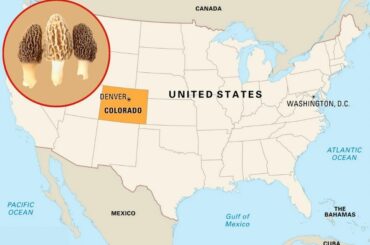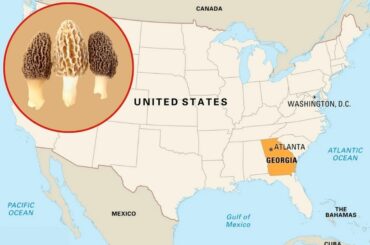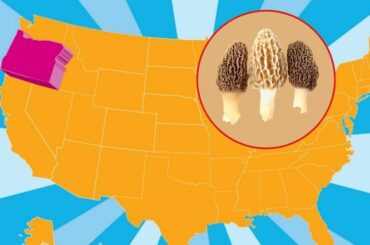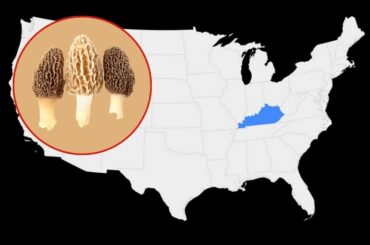For the mushrooms to reproduce their species, they have to produce seeds. Mushroom spores are the seeds of mushrooms. They are very small and can only be seen with the naked eye when enough of them form a visible cloud. Almost all species require light to grow. But, do mushroom spores need light to grow into Mycelium?
The spores of mushrooms don’t need light (or any other external stimulus like oxygen or nutrients). They are ready for germination since they leave the gills of the mother mushroom. However, unless they get in contact with the substrate (where the Mycelium grows), they won’t germinate.
So, how exactly do they grow? Let’s dig deeper.
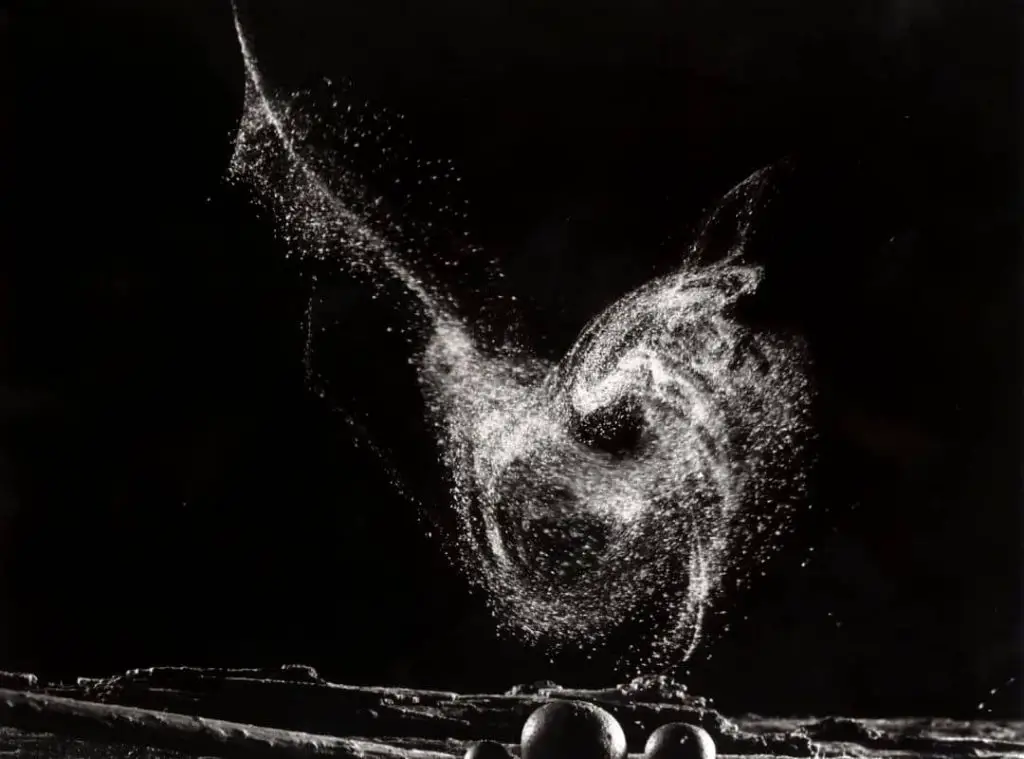
How do mushroom spores grow into a mushroom?
Contents
- 1 How do mushroom spores grow into a mushroom?
- 2 Do mushroom spores need light?
- 3 Do mushrooms need water?
- 4 Growing Medium for Mushroom growth
- 5 Preferred temperature for mushroom growth
- 6 How long does it take for mushroom spores to germinate?
- 7 How does light affect mushroom growth?
- 8 FAQ
- 9 Conclusion
- 10 Reference
Mushroom spores are not ‘alive.’ They don’t have a metabolism or anything that makes them able to grow. The only thing spores can do is wait for the right time and conditions to germinate. So, how do spores know when it’s time?
They are influenced by two things: their own genetic code and the organic molecules released by organic matter. Mushroom spores are very similar to seeds in that they need specific conditions to germinate and grow into Mycelium. Some of the most significant factors that influence mushroom spores are temperature, humidity, and food sources for Mycelium.
These factors will depend on the species of mushrooms and other environmental factors like air, water, and weather (temperature, rain, etc.). Mushroom spores can stay dormant for years until they find the perfect growing environment. That’s why it is difficult to know how old a mushroom is unless we harvest them manually. Genetics is the one determining factor that makes some spores faster than others in reaching their Mycelium form.
We talk about Mycelium as living organisms, but that’s not entirely true. They need organic molecules (Nitrogen, Carbohydrates, and Amino Acids) to grow. If the spores germinate in an environment containing these nutrients, they will grow into Mycelium. It can take several days or years for spores to germinate into Mycelium. The speed of the growth also depends on environmental factors like temperature and humidity. Mycelium is made up of hyphae (very, very long cells). The more hyphae cells it has, the stronger its network will be.
The strength of the network influences how fast the fungus is growing. The speed of growth also depends on the type of mushrooms. So, even if spores are genetically similar, two fungi can have different growth speeds. When Mycelium thrives in a suitable environment, it will grow so fast that it can be visible to the naked eye. These visible fruit bodies are so-called mushrooms. That’s why you have seen mushrooms growing in your garden in only a few hours. When the mushroom matures, it produces and releases spores, and so the cycle begins again.
Do mushroom spores need light?
As we mentioned above, spores don’t need light (or any other condition) to remain as spores. However, they require a suitable environment to germinate. This includes the ABSENCE of light. Mushrooms do not possess chlorophyll, so most of them do not need light to grow. They do not perform photosynthesis to survive, so they just grow when the Mycelium finds its food sources (sugar, nitrogen, etc.).
If the Mycelium does not have access to organic matter, it will remain dormant in the soil or in animals.
So, Mushroom spores do not need light to germinate and grow. However, they need a dark environment to remain dormant. That being said, some light does not harm their growth and actually helps speed up the growth in some ways. Still, excess light can actually kill the spores. In fact, light is the biggest cause of mushroom spores not reaching their Mycelium stage. It can even prevent them from germinating.
Do mushrooms need water?
Mushrooms need moisture to grow, and they tend to absorb water from the air. They are actually 90% water. However, that’s not enough to sustain their growth. Excessive humidity can drown spores, so they need humidity levels between 60%-80%.
If the humidity is too low, mushrooms dehydrate. When this happens, they stop growing and start producing spores instead. So, the soil (or growing medium) needs to be moist, not wet, for the mushrooms to produce their fruit. So, as you see, mushrooms need water, but just in the right amounts, not more, not less.
Growing Medium for Mushroom growth
The growing medium differs from one Mycelium to another. It depends on the mushroom species, the temperature of the environment, and other environmental conditions like water, humidity, and light. The best growing medium for mushrooms is composted organic matter. It can be straw, hay, wood chips, etc. Straw seems to be among the best growing mediums because it is so easy to find and has good aeration. However, wood chips are very rich in nutrients.
Straw and Wood chips are very easy to find in the wild, but wood chips have a lower pH, ideal for most mushrooms. So, if you plan to grow mushrooms, check the ideal growing medium for your desired species. You can find this information online or ask someone who already knows which mushrooms you want to grow.
Preferred temperature for mushroom growth
Most mushrooms require a cool environment because they grow at temperatures between 10°C (50°F) and 25°C (77°F). However, some species can thrive at higher temperatures because they are used to warmer environments. But, even if a species can grow at higher temperatures, it will still prefer cooler ones.
How long does it take for mushroom spores to germinate?
When the conditions are right, mushroom spores take a few days to a few weeks to germinate. This time frame depends on the temperature, humidity, and light conditions. Some species have a faster rate of growth than others. It is important to note that it’s possible the Mycelium came into contact with the soil before you discovered it, so it could have started growing there, and all you noticed was the fruit (mushroom).
If this is the case, it’s very likely that spores were already released everywhere. So, you can expect mushrooms to grow where your pet sleeps or eats most of the time. This is because these are ideal temperature conditions for most species.
How does light affect mushroom growth?
Mushroom spores don’t need light to germinate and prefer a dark environment. However, Mycelium prefers a dim light to form fruit bodies. That’s why some mushrooms fruit on the sides of logs or wood pieces.
An excess of light can disrupt mycelium growth and prevent it from fruiting. This is because mushrooms need a certain amount of darkness to form their fruit bodies. At the right amount and intensity, light is very beneficial for growing mushrooms. It speeds up growth and makes the mushrooms more nutritious, so they might even have some medicinal properties. Still, if the light is too intense or constant, it can kill Mycelium or prevent it from forming fruit bodies.
Mushroom lighting requirements
Above, we have mentioned that mushroom mycelium needs dim light to grow its fruit bodies. But how long do they need this “dim” light? Mycelium only requires a few hours of dim light per day to grow fruit bodies. However, the light needs to be constant, not interrupted by darkness or direct light.
If you grow mushrooms inside, and if it gets indirect sunlight, then this would be more than enough for your Mycelium to thrive. If you don’t get sufficient sunlight in your area, you will have to opt for another solution.
The best light for mushroom fruiting
There are special lights made for growing plants indoors. These so-called “plant lights” have a certain spectrum of colors that are favorable to plant growth. The “blue” light has an intense wavelength between 430 and 500 nm, and it is very beneficial for plant growth in general, but it has a negative effect on most mushrooms. The “red” light has a strong wavelength between 600 and 700 nm, but this spectrum is favorable to mushroom mycelium growth.
The “green” light is adequate on some mushroom species, and it has a wavelength between 500 and 600 nm.
The best light for most mushrooms is the “red” one, but some need the “green” spectrum as well. So, if you want to grow a specific type of mushroom with plant lights, the results of that study will help you choose the best light for you. If you don’t want to choose a more specific light, you can just go with a fluorescent lamp. These are much cheaper than LED or other types of lights, and they work well for many mushroom species.
How long should the light be on?
Experts suggest having the light on for about 12 hours per day. That time frame is enough to provide your mushrooms with enough energy, but it’s not too long to prevent them from fruiting.
If you don’t provide your mushrooms with enough light, they may not grow properly or reproduce at all. This means they won’t be harvestable. If you give your mushrooms too much light, they will start growing their fruit bodies too fast, but the fruit bodies will be smaller and less nutritious. Also, if you give your mushrooms too much light, they may start releasing spores more than usual and prevent themselves from fruiting. So, make sure you set the lighting to a time frame that won’t interfere with your mushrooms’ growth or reproduction.
FAQ
Does mushroom mycelium need light?
Mushroom mycelium requires some light to grow its fruit bodies. However, the light should be dim, not direct.
Is sunlight bad for Mycelium?
Yes. Sunlight can disrupt mycelium growth and prevent them from fruiting.
Can I use sunlight for mycelium growth?
You can, but you will need to set up the lighting properly. Also, you might not get enough of it if your area doesn’t receive enough sunlight. Mycelium can grow in indirect sunlight, not direct sunlight.
Do psilocybe cubensis need light?
Yes. Psilocybe cubensis and other species of psilocybin mushrooms grow their fruit bodies when exposed to light, even if it’s dim. That’s because the light has to be constant and not interrupted by darkness or direct light.
Conclusion
Mushroom spores do not need light to remain dormant or germinate, but when the spores germinate, and the Mycelium starts growing, it needs some light. Mycelium requires a few hours of dim light per day, but it should be constant and not interrupted by darkness or direct light. If you don’t get sufficient sunlight in your area, you will have to opt for another solution. Experienced mycologists recommend using fluorescent lamps for mushroom fruiting, but any type of light will be beneficial. Remember that too much or too little lighting can prevent your mushrooms from growing and reproducing
Reference
Kauserud, H., Heegaard, E., Halvorsen, R., Boddy, L., Høiland, K. and Stenseth, N.C., 2011. Mushroom’s spore size and time of fruiting are strongly related: is moisture important?. Biology Letters, 7(2), pp.273-276.
Poyedinok, N.L., Buchalo, A.S., Efremenkova, O.V. and Negriyko, A.M., 2005. The light factor in biotechnology cultivation of medicinal mushrooms. International Journal of Medicinal Mushrooms, 7(3).
Read Next : Do Mushroom Spores Go Bad? ( Yes, You can Save Them! )

